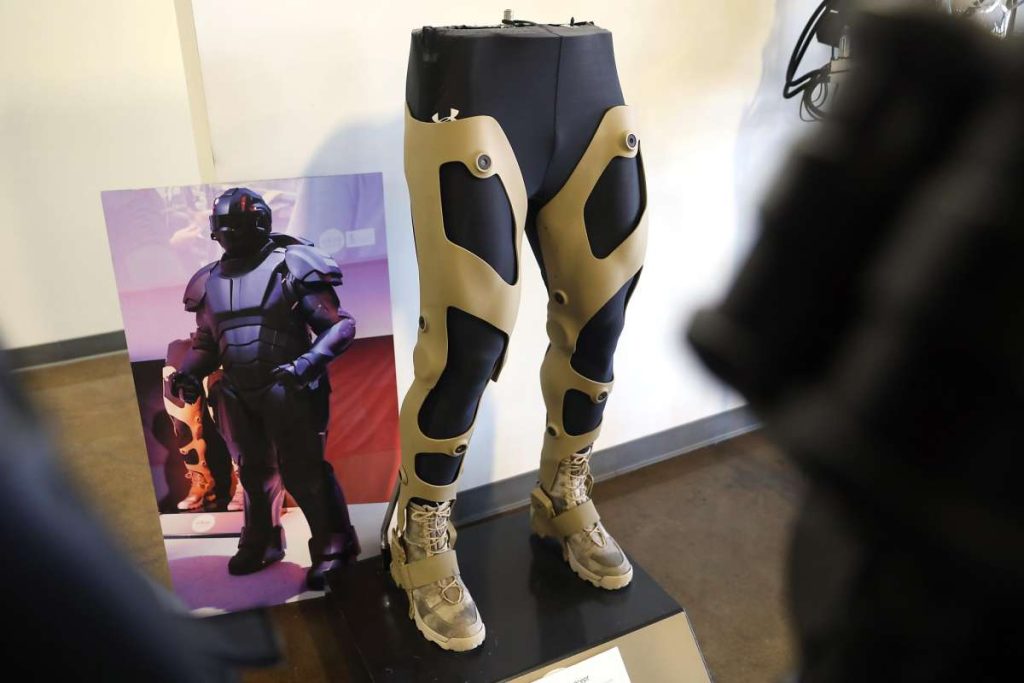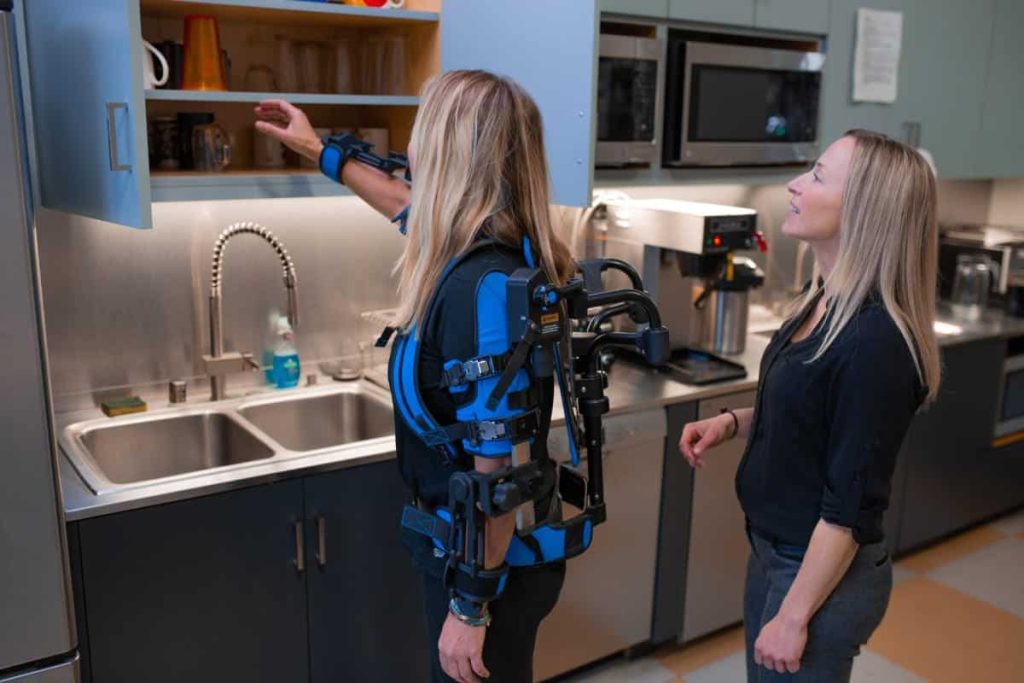Exoskeleton technology refers to wearable devices that can enhance the wearer’s abilities. This may include giving the user enhanced strength, reducing user fatigue, or even helping users regain abilities lost due to spinal cord injuries (SCI), strokes, or traumatic brain injuries. The devices may be fully powered exoskeletons with the ability to move for the user, or they may simply assist with user-initiated movements. Some exoskeletons have sensors that can help monitor the user’s movements to improve safety and provide relevant information to healthcare professionals on how well the patient is progressing. Wearable robotic exoskeletons have a wide variety of uses for military applications, the construction industry, healthcare, and more.
There have been many advancements in wearable robotics since the early days. The first exoskeleton developed and used by Ekso Bionics, the world leader in exoskeletons, was the Human Universal Load Carrier. The HULC model was made for military use. The unit provided leg support and functioned as a backpack of sorts that allowed soldiers to carry heavy loads of up to 200 lbs across great distances and at higher speeds of up to 10 mph. Unfortunately, HULC couldn’t be considered a success overall because it impeded some movements, and it could even lead to greater muscle strain, which is the exact opposite of what an exoskeleton should do.
With many more models available today that are being used across multiple industries, you may be wondering how strong an exoskeleton really is. This simplest answer is that it just depends on the model and what it’s being used for. Here are some of the more commonly used robotic exoskeletons, what they’re used for, and how much they can support.

Rehabilitative Devices
One of the most exciting uses for wearable robots is in clinical settings where they’re used to help patients with neurological disorders and physical disabilities. One example could be rehabilitation robot technology that helps a patient with paraplegia brought on by a complete or incomplete spinal cord injury to walk again. They can also be used to help patients who have had a stroke with gait training to regain their original gait and help them improve their balance and posture. They can help the rehabilitation process of patients who have suffered traumatic brain injuries as well. Generally speaking, robots used for these purposes are strong enough to perform all of a patient’s movements for them if necessary, and they also have to be strong enough to support each patient’s full weight, up to 250lbs for some exoskeletons.
Ekso’s latest medical exoskeleton for neurorehabilitation, the EksoNR, is a great example of one of these robots. This is the first exoskeleton to be cleared by the FDA for treatments involving strokes, acquired brain injuries, and SCI. This powered exoskeleton robot assists patients with recovering their natural gait by promoting neuroplasticity and targeting intensity, thus teaching patients’ brains and muscles to work together to walk again. This device may help wheelchair users transition to crutches or a cane and assist those patients from using an assistive device to eventually walking under their own power.
This device provides full support to the spine and lower extremities while also helping patients maintain good posture. Like most exoskeletons, the device wraps around the patient’s chest and waist while using a torso pad and rigid back to support the spine. This particular device also provides full support to the hips, thighs, knee joints, and ankle joints. The robotic device can then perform the full movements of the patient’s lower limbs if needed, or it can assist with patient-initiated movement. Naturally, the exoskeleton is strong enough to support each patient’s own weight, up to 220lbs.
This exoskeleton robot also features pre-gait exercise programs to allow users to practice stepping in place, squatting, shifting their weight, and other exercises before they begin each session. Patients can take their time adapting from a wheelchair to the assistive device, and sensors and data capture capabilities allow for easy systematic reviews of progress in a clinical setting. Once a patient has gained strength, balance, and coordination, they can begin working on advanced gait such as walking backward, side-stepping, and even walking with added resistance.

Industrial Devices
Exoskeletons also have many applications in industrial settings, especially for construction and manufacturing. Upper body exoskeletons allow workers to lift heavier loads, perform repetitive overhead tasks, and maintain demanding positions all with greatly reduced fatigue and discomfort. Even better, these systems are lightweight and can improve human performance and workplace safety without irritating the user’s body.
Jointed exosuits, like the FORTIS exoskeleton, are robot suits that provide support to the human operator’s entire body. This type of power suit is great for workers who have to carry and use heavy tools (of up to 36 lbs) since it’s able to transfer the weight to the frame of the exoskeleton and then to the ground. This greatly increases the worker’s endurance and prevents unnecessary strain on muscles and joints.
Ekso even makes a zero-gravity tool holder that can support large and heavy tools of up to 42 lbs. The device can be mounted almost anywhere and is particularly useful for jobs on scaffolding and other elevated areas. It works similarly to the FORTIS exoskeleton in that it transfers the weight of the tool to its base and the ground. As the Zero-G name implies, it also allows workers to move these tools weightlessly. The number one goal of industrial exoskeletons is to prevent workplace injuries, and these tools do an excellent job.
Contact Ekso Bionics
Further research and exploration will no doubt uncover even more uses for exosuits, and we’ll begin to see ones that can carry even heavier loads. Perhaps one day, the super-strength granting exosuits seen in pop culture will step from fiction into reality. To learn more about the newst knowledge afforded by exosuits and how they can help, reach out to the Ekso Bionics team today.